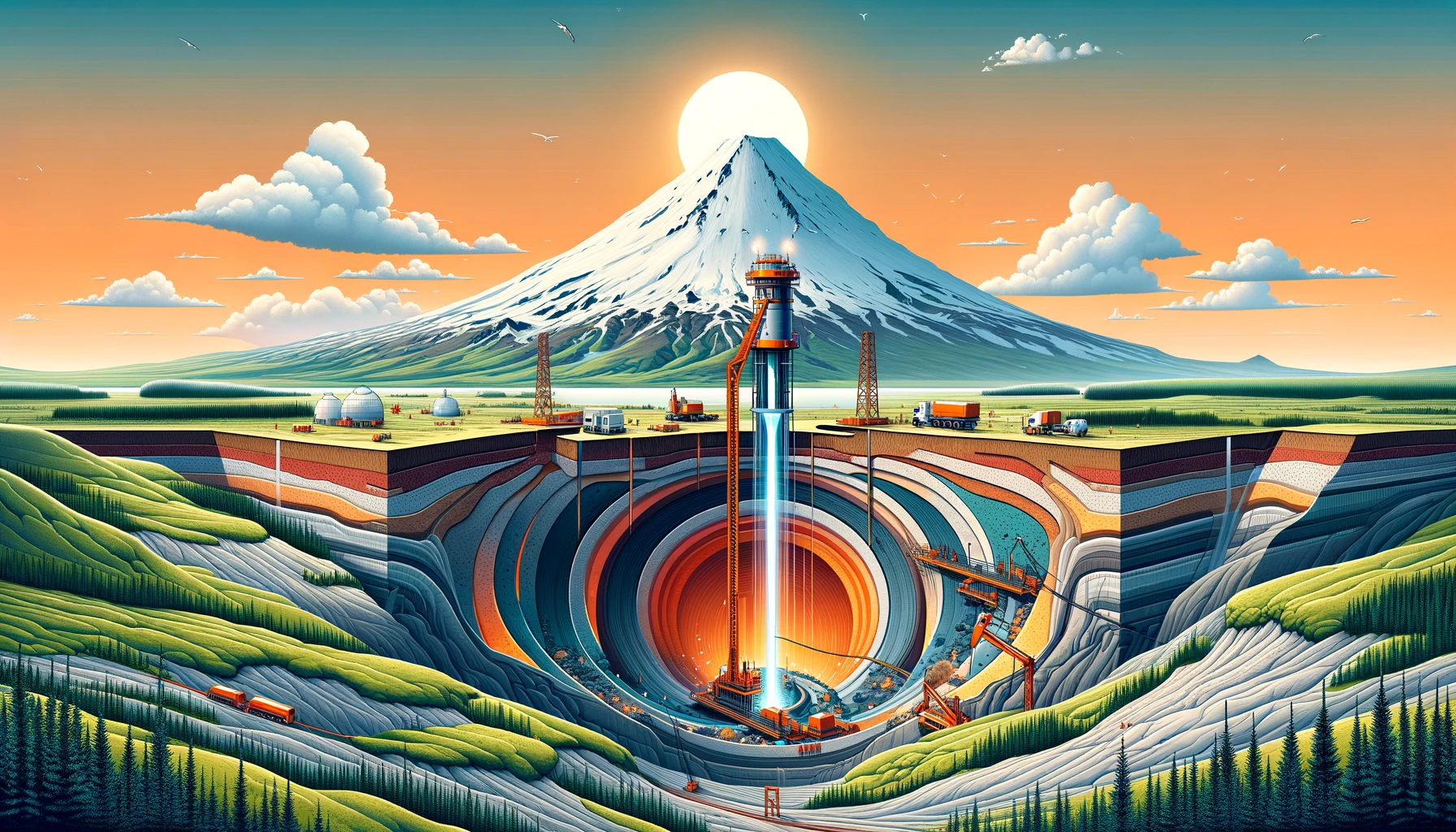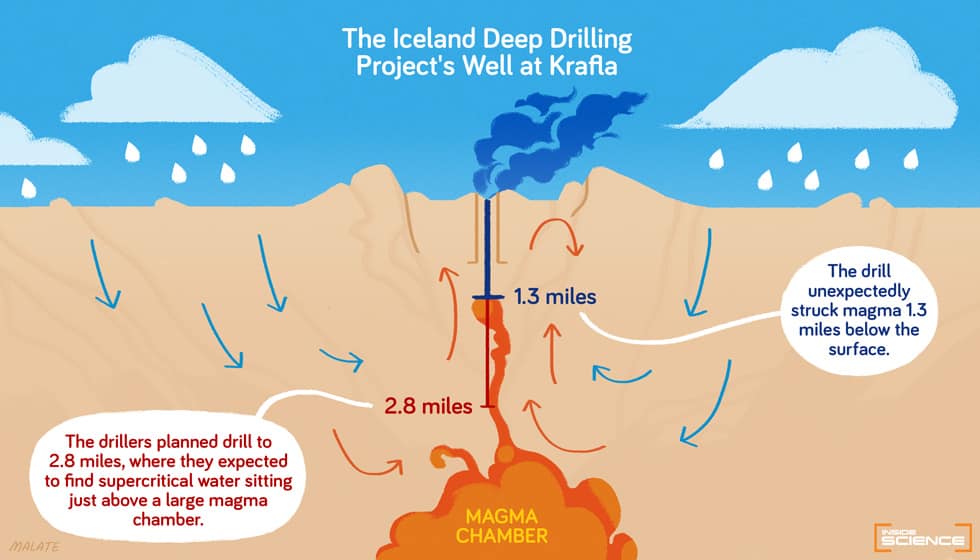
An initiative that sounds a lot like Jules Verne‘s Journey to the Center of the Earth might mark the first time humans have tapped into magma, the molten rock liquid flowing beneath Earth’s crust. In 2026, Iceland’s Krafla Magma Testbed (KMT) project will drill into a volcano’s magma chamber, seeking to tap into its super-hot fumes to generate geothermal energy at a scale that has never been attempted before.
The endeavor promises to power homes across Iceland with a renewable, limitless energy source. And no, this won’t cause the currently active Krafla volcano to erupt, according to John Eichelberger, a volcanologist at the University of Alaska Fairbanks interviewed by New Scientist.
Harnessing the Earth’s heat
Geothermal energy, a technology harnessed by Iceland for years, involves drilling into hot underground regions to produce steam from heated water. This steam drives turbines, generating electricity. Today, at least 90% of all homes in Iceland are heated with geothermal energy and 70% of all energy used in the island nation comes from geothermal sources.
However, these systems tap into relatively cooler geothermal energy, yielding lower efficiency. Tapping into the magma chamber’s higher temperatures could significantly boost the energy supply, making it more powerful than conventional wells. Water in the magma chamber isn’t collected as steam as is the case with other geothermal plants but rather as “supercritical” water — water that is so hot and pressurized it is neither exactly liquid nor steam. A single magma geothermal plant could generate at least ten times more power than a conventional geothermal plant.
Formidable technical challenges
Krafla stands as one of the world's most active volcanic areas, straddling the Mid-Atlantic Ridge tectonic boundary. It has witnessed numerous eruptions, the latest being in 1984. Despite its volatile nature, Krafla's unique geological position makes it an ideal site for this pioneering geothermal project.
Its magma chamber, where temperatures soar up to up to 2,372°F (1,300°C), is situated only 1-2 miles below the surface. This makes drilling into the magma chamber both relatively easy and extremely challenging; easy because the chamber's depth is shallow, hard because the drill bits need to withstand the high temperature without melting.
But we know for sure it can be done because in 2009 a nearby Icelandic geothermal plant accidentally drilled into Krafla's magma chamber. The incident revealed important insights about the liquid state and dynamic interactions of the magma, although the drill's steel casings were obliterated in the process. On the bright side, this incursion also showed that exposing the magma chamber doesn't cause volcanoes to erupt.

This wasn't the first time something like this had happened. The first documented case was actually at the Puna Geothermal Venture in Hawaii in 2005. At the time, from the energy companies' point of view, exposing magma rather than hot steam was seen as a failure. That's mighty ironic given how hard volcanologists tried to accomplish the same thing in years past. But later it became apparent even for the energy companies that the economic potential is immense.
KMT scientists are still experimenting with the right materials that can withstand these conditions in anticipation of the first boring slated for 2026. If successful, KMT might not only provide copious amounts of energy but also advance science by providing new tools for volcanic monitoring and eruption prediction.
Ultimately, magma chamber drilling will provide an unprecedented opportunity to observe a volcanic eruption from its source. Volcanologists have long relied on indirect methods to study magma. The KMT project will allow scientists to study magma up close through direct sampling for the first time.
As such, Iceland's journey to the magma's heart is not just about energy. The KMT project could revolutionize our understanding of volcanic activity, continental formation, and even geothermal energy. It's a bold step both into a new era of renewable power and a deeper understanding of our planet's fiery depths.


